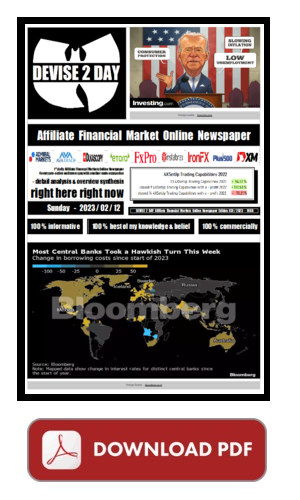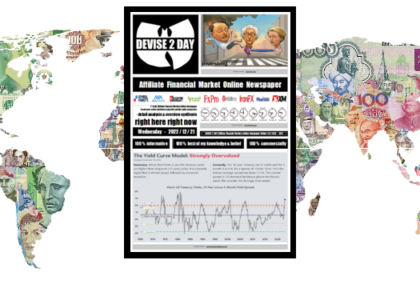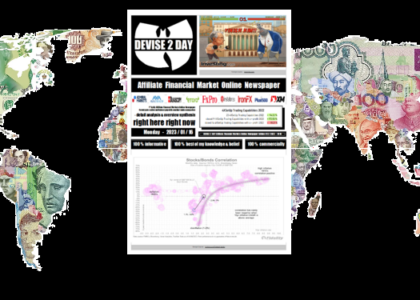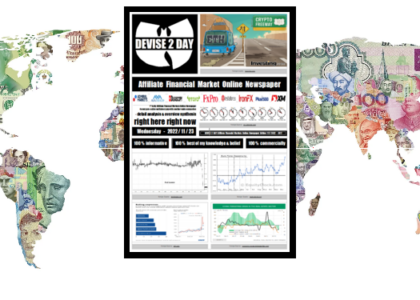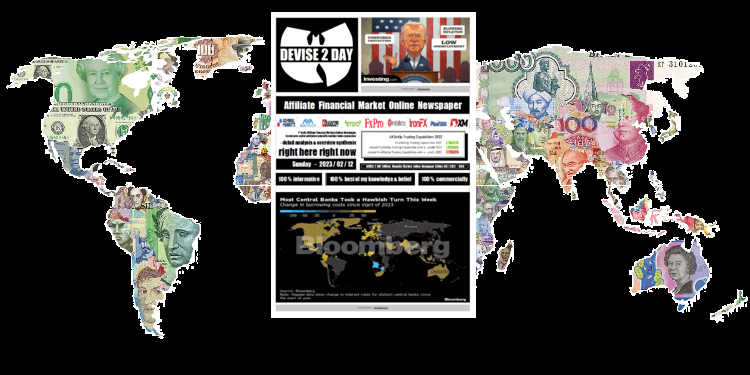
2023/02/12 (168) Column
More and more young people
are enthusiastic about the stock market!
And hopefully also thanks to my humble personality…
The past year 2022 was marked by the Ukraine war, rising inflation, an expensive US dollar, yield curves that are becoming expensive, and/or price declines on the stock markets. Nevertheless, 2022 was an extremely good year for equity culture here in my home country of Germany. According to a recently published study by Deutsches Aktieninstitut (DAI), the number of people in Germany invested in stocks, stock funds or ETFs rose by 826,000 (+7%) to 12.9 million. This even surpassed the previous shareholder record from 2001.
Overall, the shareholder quota in Germany increased to 18.3 percent (measured against the total population aged 14 and over), while ten years ago only 14.7 percent of Germans were involved in the stock market. Despite the weakness in the share price, many newcomers to shares have dared to enter the stock market in the past year, while experienced investors reacted calmly and/or stayed invested. Despite this positive development, Germany is still lagging behind in an international comparison. Because in countries like Sweden, Switzerland, the Netherlands or the USA, the shareholder quotas are between 30% and 50%. Sooner or later, when it comes to stock culture, Germany could definitely succeed in joining the international elite. Because, as the detailed evaluation of the DAI shareholder study shows, young people in particular are becoming more and more enthusiastic about the stock market.
Therefore at this point a short concrete pragmatic practical help for self-help of a WallStreet veteran:
Read, analyze and evaluate my D2D every day)
even if it should read dry, boring and insipid, read everything through every day.
I try to make each D2D Edition so interesting and tasteful that you can’t wait to read the next Edition tomorrow. And also internalize the corresponding charts. Because you will only become competent by repeating and repeating it every day. Analyze and mich more evaluate what you have read. And that, for example, by dealing with each piece of information, such as from the Devise2Day Another 48h, by always asking yourself: Is that what I read an usefilly information for me? And/Or should I buy now based on this information? sell? or do nothing?
Compare my 4XSetUps Trading Capabilities with other colleagues.
Open a new CFD trading account with an affiliate partner on my homepage so that we can stay in touch personally at any time with the help of the internet, in the form of a smartphone and/or tablet,if we both want it at the same time.DEVISE 2 DAY 48h
– Last News About What Drives The News Media
CDU strongest force and yet won nothing?
Greens before SPD – FPD under five percent?
In the elections in Berlin, the CDU became the strongest force for the first time in more than two decades. According to the first projections by state TV Broadcasts ARD and/or ZDF on Sunday, the Christian Democrats with their top candidate Kai Wegner are clearly ahead. The Greens surprisingly land in second place, the SPD with Prime Minister Franziska Giffey falls to a historic low. The AfD is growing and is certainly represented again in the House of Representatives, the FDP is narrowly eliminated.
Due to serious election glitches, the state constitutional court had declared the election of the state parliament in September 2021 and the district elections invalid – and ordered a repetition. At that time, long queues in front of polling stations and missing, mixed up or copied ballot papers made headlines nationwide.
According to the projections, the CDU gains almost ten percentage points in the repeat election and comes to 27.8 to 28.1 percent (2021: 18.0 percent). The Greens land at 18.3 to 18.8 percent (18.9). The SPD is 18.2 to 18.7 percent (21.4). The left slips to 12.1 to 12.5 percent (14.1). The AfD, on the other hand, gains 9.0 to 9.3 percent of the vote (8.0). The FDP loses significantly and fails at 4.5 to 4.8 percent at the five percent hurdle (7.1). The CDU would therefore have 42 to 47 seats, the Greens 28 to 32 and the SPD 27 to 32 seats. The left would get 19 to 21 seats, the AfD 14 to 15.
Around 2.4 million people were entitled to vote in the House of Representatives. According to the forecasts, turnout was between 63.5 and 65.0 percent. In 2021 it was 75.4 percent, but the Bundestag was also elected that year. CDU top candidate Wegner spoke of a “phenomenal” success and said: “Our job is to form a stable government.” Berlin chose the change. He announced that he would invite the SPD and the Greens to explore. The CDU federal chairman Friedrich Merz wrote on Twitter: “The clear government mandate for the CDU is the first step towards our goal of making the federal capital work better.” But whether Wegner can forge a government alliance is an open question. The SPD and the Greens had indicated that they wanted to continue their coalition with the left even in the event of a CDU victory – for which the majority would be sufficient.
Our Federal Republic of Germany is divided into 16 federal states – and one of them is Berlin. Unlike in the USA, the elections take place independently of the 16 federal states. We don’t have any so-called midterm elections here, every four years. And because there is no two-party system here in my home country of Germany, you usually need a coalition to get over 50 percent – to be allowed to govern. And the SPD, the Greens, as well as the left, get over 50 percent. So it should only be a matter of time before they come to an agreement – and continue to rule for another 5 years Berlin again.
DEVISE 2 DAY 48h
– Last News About What Drives The News Media
The wild ebb and flow of the last few trading days continues with Disney shares in focus today. The past quarter was particularly robust in the area of amusement parks. The $5.5 billion savings plans and new corporate structure under CEO Bob Iger are what’s fueling the course. Wall Street price targets are rising across the board. Shares of Pepsi, Philip Morris, Robinhood, MGM Resort and Wynn are also trending positive following the results. Mattel, on the other hand, is providing lousy numbers and outlook, with the stock down 10% premarket. Affirm delivers similarly poor numbers andplans to cut almost 20% of the jobs. The stock loses around 20%. The biggest drag remains the inflation data that will be reported on February 14th. After the Manheim Used Car Index rose surprisingly, Manhattan reports a new record high in rental prices. New York City is among the largest US rental markets, and rents account for around a third of consumer prices.
Forex 10-Year Government Bond Yield Stock Markets
Russian Ruble at 10-Month Low Russia 10-Year Bond Yield at 4-Month High Asian Stocks Mostly Decline
Yen Cuts Gains on Ueda Comments Japan 10-Year Bond Yield Hovers at 0.5% FTSE 100 Ends Week on A Sour Note
Sterling Holds Above $1.21 After GDP Data US 10-Year Treasury Yield Tops 3.7% European Stocks End Week Lower
Dollar Stabilizes Ahead of Inflation Data UK 10-Year Bond Yield Holds Above 3.3% After GDP Dow and S&P Bounce Back, Nasdaq Slides
Forex
Russian Ruble at 10-Month Low
Yen Cuts Gains on Ueda Comments
Sterling Holds Above $1.21 After GDP Data
Dollar Stabilizes Ahead of Inflation Data
Russian Ruble at 10-Month Low
The Russian ruble was changing hands around $73, closing in on its lowest level since April 2022, after the central bank decided to keep interest rates unchanged at 7.5% for a third consecutive meeting. Policymakers said that if pro-inflation risks intensify, the bank will consider the necessity of a rate increase at its upcoming meetings. Updated forecasts from the central bank point to annual inflation at 5.0–7.0% in 2023 and the growth of GDP at (-1.0)-(+1.0)%. Meanwhile, investors remained worried about the country’s public finances after the West imposed a price cap on Russian oil products. Oil and gas revenues amounted to RUB 426 billion in Jan. a decline of 46% from a year earlier, primarily due to a decrease in quotations for Urals oil and a drop in natural gas exports.
Yen Cuts Gains on Ueda Comments
The Japanese yen cut half of the gains to settle at 131 after strengthening nearly 1% to 130 per USD earlier on Friday as investors were digesting the unexpected appointment of the economist Kazuo Ueda as Bank of Japan governor. Investors welcomed Ueda’s appointment as he is expected to adopt a more hawkish approach. However, Ueda also commented that the central bank’s current easy monetary policy was appropriate and that it should continue. The central bank recently defied speculations about another policy adjustment by maintaining its ultra-low interest rates and leaving its yield control policy unchanged. BOJ Governor Haruhiko Kuroda reiterated that the 2% inflation target must be achieved in a sustainable fashion, one that is accompanied by a healthy rise in wages.
Sterling Holds Above $1.21 After GDP Data
The British pound hovered around $1.21, remaining above the $1.1958 mark touched on February 2nd, which was the weakest level since January 6th, as investors digested fresh GDP data. Britain’s economy narrowly avoided entering recession during the fourth quarter, while monthly GDP data for December alone, a month marked by widespread rail strikes and bad weather, contracted by 0.5%, more than the 0.3% expected by markets. The Bank of England forecast at the beginning of the month that the UK would enter a shallow but lengthy recession, starting in the Q1 2023 and lasting five quarters. On the policy front, the UK central bank is seen as more dovish relative to the ECB and the US Fed. UK officials delivered a 10th straight interest rate hike in February, raising Bank Rate to 4%, its highest since late `08. However, policymakers believed that inflation may have peaked, signaling that its tightening cycle might come to an end.
Dollar Stabilizes Ahead of Inflation Data
The dollar index stabilized above 103 on Friday as investors look ahead to US inflation data next week for clues about the trajectory of Federal Reserve interest rate hikes. Investors also heeded hawkish signals from Fed officials this week who reaffirmed their commitment to bring inflation down with further policy tightening, against the backdrop of robust jobs numbers. Meanwhile, investors remain cautious about escalating risks of a recession and signs of cooling inflation in the US. Fed Chair Jerome Powell said earlier this week that the disinflationary process has started, but warned of more rate increases if the jobs market remains strong. Investors now look ahead to more central bank commentary and US consumer sentiment data on Friday.10-Year Government Bond Yield
Russia 10-Year Bond Yield at 4-Month High
Japan 10-Year Bond Yield Hovers at 0.5%
US 10-Year Treasury Yield Tops 3.7%
UK 10-Year Bond Yield Holds Above 3.3% After GDP
Russia 10-Year Bond Yield at 4-Month High
The yield on Russia’s 10-year OFZ bond rose past 10.8% in February, the highest since a brief peak of 11% in late September caused by Russia’s military mobilization, as concerns mounted over the Kremlin’s fiscal sustainability. The federal government posted a budget deficit of RUB 1.76 trillion, the biggest gap for a January month since at least 1998.
Japan 10-Year Bond Yield Hovers at 0.5%
The yield on the Japan 10-year JGB consolidated at the Bank of Japan’s implicit policy cap of 0.50% as investors assessed whether the institution would maintain its ultra-easy monetary stance when the new governor takes a seat in April. Kazuo Ueda, a well-respected economist is set to take a governor’s job after current Deputy Governor Masayoshi Amamiya, the most dovish candidate, declined it. Markets welcomed Ueda’s name as he is expected to adopt a more hawkish approach. The BOJ has been spending trillions of yen to preserve the ceiling on the 10-year bond as part of efforts to keep borrowing costs low and stimulate the economy.
US 10-Year Treasury Yield Tops 3.7%
The yield on the US 10-year Treasury note, seen as a proxy for global borrowing costs, topped 3.7%, a level not seen in more than a month, as investors adjust their portfolios for a higher terminal rate. Richmond Federal Reserve president Thomas Barkin was among the latest officials to acknowledge that the US economy is slowing but warning that it is fundamental to continue hiking to ensure inflation doesn’t get entrenched. Investors now see the Fed raising the fed funds rate to 5%-5.25%, with the world’s most influential central bank delivering a 25 bps hike in March and May before pausing. Looking ahead, Wall Street and the Fed are again in a standoff on the future path of interest rates, with the former betting on a rate cut later this year while the latter reaffirmed its view that interest rates will stay higher for longer.
UK 10-Year Bond Yield Holds Above 3.3% After GDP
The yield on the UK’s 10-year Gilt held slightly above 3.3% after touching 2.996% on February 2nd, its lowest level since November 24th, as investors digested Britain’s fourth-quarter GDP data. The UK economy flatlined in the fourth quarter of 2022, in line with expectations and narrowly avoiding a recession. However, monthly GDP data for December alone, a month marked by widespread rail strikes and bad weather, showed that the economy shrank 0.5%, more than the 0.3% expected by markets. The Bank of England has raised interest rates by 50bps at the beginning of the month but dropped its pledge to keep increasing them “forcefully” if needed and said inflation had probably peaked, while projecting a much shallower contraction than previously estimated.
Stock Markets
Asian Stocks Mostly Decline
FTSE 100 Ends Week on A Sour Note
European Stocks End Week Lower
Dow and S&P Bounce Back, Nasdaq Slides
Asian Stocks Mostly Decline
Asian equity markets mostly fell on Friday, tracking Wall Street lower as investors fretted about the prospect of further policy tightening from the Federal Reserve amid its commitment to bring down inflation. Investors also digested data showing China’s inflation rate hit a three-month high of 2.1% in January, but below market expectations of 2.2%. Shares in Australia, Hong Kong and mainland China declined, while Japanese stocks bucked the trend on strong domestic earnings and robust corporate outlooks.
FTSE 100 Ends Week on A Sour Note
Equities in London came under pressure on Friday, with the benchmark FTSE 100 pulling back from its record closing high to close below the 7,900 mark, dragged by heavyweight materials stocks. The British economy stalled in the last quarter of 2022, with living standards hammered by a surge in inflation and reflecting the impact of strikes. The Bank of England has warned that Britain would likely enter a shallow but lengthy recession, starting in the first quarter of this year and lasting more than a year. British retailer Ocado Group plunged more than 10% to be among the top losers amid a darkening outlook for the economy. On the flip side, oil giants BP and Shell rallied roughly 3% each amid higher crude prices. The FTSE 100 fell nearly 0.3% this week.
European Stocks End Week Lower
European shares dropped from nine-month highs on Friday, extending a global rout as investors fretted about the prospect of further policy tightening from the European Central Bank and Federal Reserve amid their commitment to bring down inflation. Investors also digested data showing the British economy flatlined in the fourth quarter of 2022, in line with expectations and narrowly avoiding a recession. However, monthly GDP data for December alone, a month marked by widespread rail strikes and bad weather, contracted by 0.5%, more than the 0.3% expected. On the corporate front, Norwegian independent oil firm Aker BP said it will boost its dividend by 10% after posting a $2.2 billion operating profit for the final quarter of 2022. Swedish defense equipment maker Saab also reported a Q4 operating profit, while Zara owner Inditex has reached an agreement to
Dow and S&P Bounce Back, Nasdaq Slides
The Dow Jones added more than 150 points and the S&P 500 ticked up 0.2% on Friday, while Nasdaq 100 was down 0.5% as investors digested the most recent economic data and comments from Federal Reserve speakers. Hawkish remarks from Federal Reserve officials brought down hopes that the central bank might soon pivot. Meantime, the University of Michigan Index of Consumer Sentiment’s rose in February but still it showed short-term inflation expectations have risen. On the corporates front, Lyft plunged 36% as its earnings result missed expectations and following the announcement of price cuts. Expedia shares fell 8% after disappointing quarterly report. For the week, the Dow was up 0.2%, while the S&P 500 dropped 0.6% and Nasdaq 100 fell 1.8% heading for the worst week since December.
DEVISE 2 DAY 48h
– Where I Was Wrong, Where I Was Right
After TESLA stock traded at $202 last week; and we have once again reached our price target, I would like to argue a little more cautiously this week! The risk of disappointment in terms of inflation this week cannot be ruled out. Nevertheless, we remain long in our remaining open positions this week: long 4XSetUps in EURUSD, long 4XSetUps in DOW Future, and/or long in DAX Future. In addition, I formulated a new long 4XSetUps for the ADIDAS share. And that right at the beginning of the week, based on the closing price on Friday.
In addition, I am still undecided to formulate a new further 4XSetUp via UKOIL, i.e. a CFD on the Brent future. However, WTI crude futures were trading above $79 per barrel after jumping almost 3% to $80.3 after Russia announced its plans to cut output by 500,000 barrels a day in March, 5% of total production. The unexpected move is a retaliation against the European ban on seaborne imports and price caps for Russian oil products, causing a wave of volatility in oil markets. The US benchmark is now up almost 9% this week, as concerns about tight global supplies come at a time when demand in China is set to rebound. Saudi Arabia, the world’s top exporter, raised crude prices for Asian markets for the first time in six months in the latest signal that demand could be poised to bounce on the likelihood of higher imports from China.
good morning, good day, and/or good night
at whatever time, wherever you are !
right here right now :

